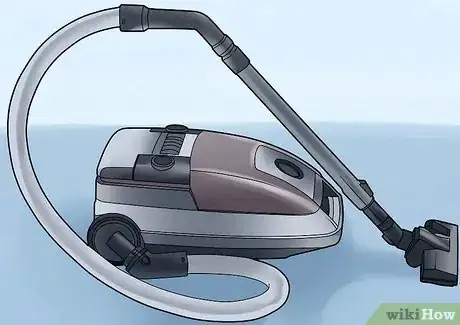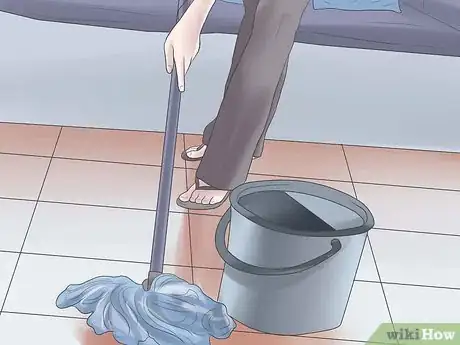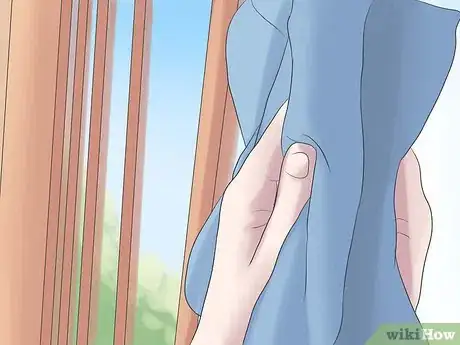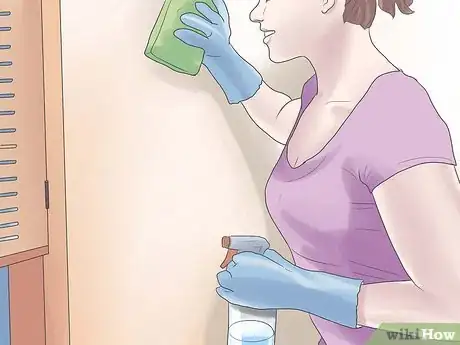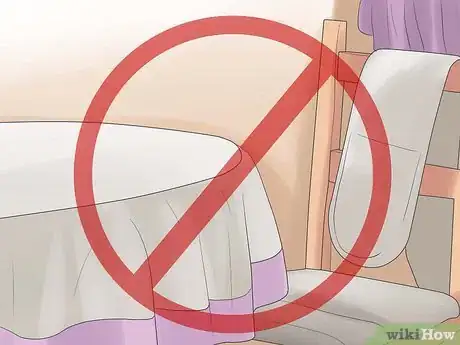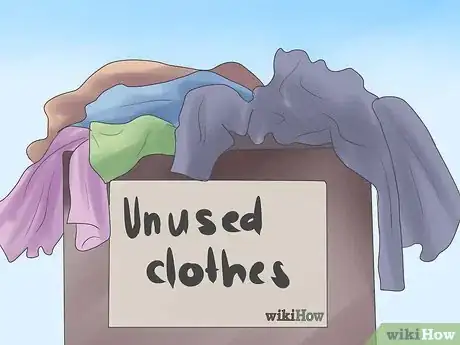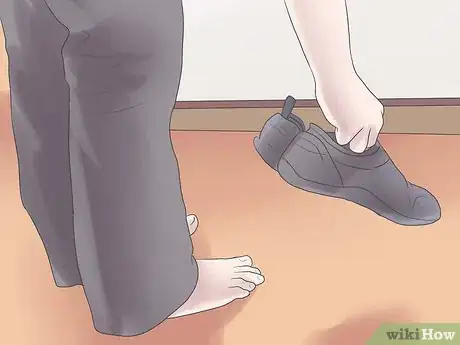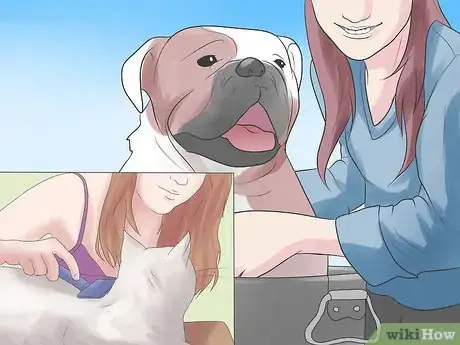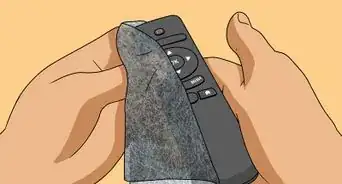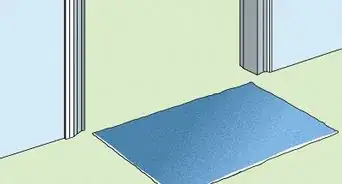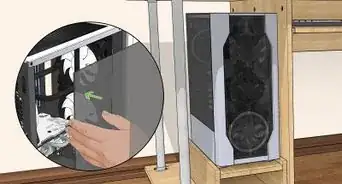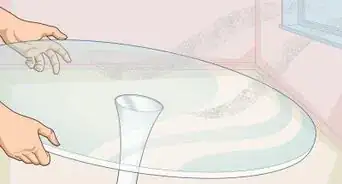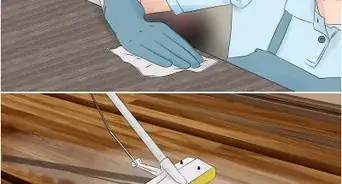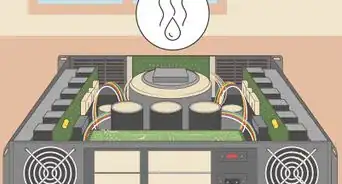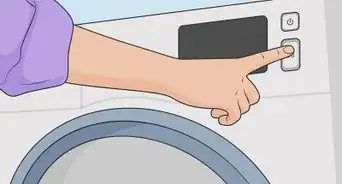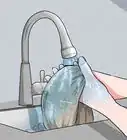This article was co-authored by Ashley Matuska. Ashley Matuska is a Professional Cleaner at the Founder and Owner of Dashing Maids in Denver, Colorado. Ashley has over seven years of experience in the cleaning industry. She and her team specialize in offering sustainable deep cleaning and maintenance cleaning services.
There are 11 references cited in this article, which can be found at the bottom of the page.
wikiHow marks an article as reader-approved once it receives enough positive feedback. This article has 17 testimonials from our readers, earning it our reader-approved status.
This article has been viewed 1,557,642 times.
Dust is an accumulation of small particles that include bits of cloth fibers, paper, hair, pet dander, skin cells, dirt, and more. Too much dust can lead to allergies and other health problems, so it's a good idea to keep it under control.[1] Fortunately, there are a variety of simple steps you can take to reduce the amount of dust that's in your home.
Steps
Filtering the Air
-
1Clean or upgrade your air filters.[2] If your house is heated and/or cooled by a central system, you can change the filters as a means of controlling dust levels in your air. Dust will continue to build up in your home, but a quality filter can slow down the rate of dust accumulation.
- A standard air filter will only filter big particles from the air to prevent damage to your heating or cooling systems. To prevent dust, it is recommended that you use high-quality paper or pleated fabric filters that are disposable and replace them every 1 to 3 months.[3]
- The highest quality filters are HEPA (high-efficiency particulate arrestance), but you should only use these with compatible heating and cooling systems.[4]
-
2Get an air purifier.[5] These machines clean the air by trapping dust particles. They're great for high-dust households or families with dust allergies. Air purifiers only clean the air in the room they're in, so consider getting one for each bedroom and the living room.
Cleaning Up Dust
-
1Vacuum twice a week. Using a vacuum equipped with a HEPA (high-efficiency particulate air) filter will ensure that you're sucking up as much dust as possible. Vacuum all the carpeting in your home, focusing especially on high-traffic areas. You can also vacuum other flooring. Vacuuming frequently really cuts down on how much dust is able to build up under furniture and in corners - you'll probably notice a difference right away.[6]
- Be sure to change your vacuum filter frequently.
- Make sure your vacuum is in good working order. A broken vacuum will just spit the dust back into the air, making the problem worse.
- Consider investing or switching to a bagged vacuum cleaner, as they’re better at trapping dust.[7]
-
2Sweep the floors every few days. Using a broom and dustpan to get rid of the dust on the floors you don't vacuum is another great way to reduce your household dust.[8] Sweep frequently in areas that tend to have a lot of dust, like doorways, hallways and the kitchen floor. Toss out the dust in your garbage can to make sure it doesn't reenter your household.
-
3Mop the floors often.[9] Going over your flooring with a wet mop is a great way to collect the dust you missed while sweeping. If you mop frequently, you'll be able to get the dust under control. Letting it go too long will make it a lot more difficult to clean up all the dust and dirt, and you may need to do some scrubbing.
-
4Dust with microfiber cloths.[10] Not all dusting cloths are made alike. If dust is an issue in your house, it might be time to spring for a microfiber dusting cloth. This fabric is designed to trap dust and hold it. Using an old t-shirt or towel tends to move the dust around rather than actually getting rid of it. Same goes for feather dusters - your furniture will look cleaner, but the dust particles have simply moved into the air.[11]
- Use microfiber cloths to dust all surfaces where dust tends to accumulate, like the top of your mantel, desk, side tables, and so on. Wet cloths tend to collect dust better than dry cloths, so when you're dusting furniture that isn't wooden, try wetting the cloth first.
- Wash microfiber cloths in the washing machine immediately after dusting to get rid of everything the cloth collected.[12] Don't use dryer sheets when you run them through the dryer, though; fabric softener reduces the cloths' capacity to hold the dust.
-
5Wash your bedding often. Sheets, blankets, comforters and pillows are places where dust tends to accumulate, often causing people to wake up with stuffy noses from breathing dusty air all night. Every time you get in or out of bed, you unknowingly send swirls of dust into the air. The solution is to wash your bedding often, especially if you or your family members have dry skin, or if your pets sleep with you in the bed.
- Wash sheets and pillowcases about once a week if you have a high-dust household.
- Wash other bedding and blankets once every three or four weeks.
-
6Beat your cushions and rugs once a month. Like your bedding, your furniture cushions and your rugs have a tendency to pick up a lot of dust over time. Every time you sit on your couch or walk on your rug, you're sending dust into the air.[13] Every 3 months, take your cushions and rugs outside for a few whacks and eliminate as much dust as you can.
- An old broom handle is a great tool to use for beating rugs and cushions.
- Beat them all over, not just in the same place.
- Keep beating rugs and cushions until you don't see dust particles flying into the air with every whack.
-
7Clean your walls from top to bottom. Every few months, when your house is due for a deep cleaning, go over the walls, trim and baseboards with microfiber cloths. Clean the top of the walls first, making your way down to the bottom. That way you'll be able to collect all the dust that falls down as you clean.
Clearing Away Clutter
-
1Get rid of knick-knacks. If every room in your house has a lot of decorative items sitting around, it will be a lot harder to reduce your dust. Go through your house and do a sweep for dust-collecting items that you don't really need. This will leave your surfaces much easier to clean.[14]
- For those items you really want to keep, consider moving some of them to a room that isn't used as frequently by your family. That way, the main rooms in your house won't be as likely to accumulate dust.
-
2Remove piles of magazines and books. As these items degrade over time, they produce a lot of dust. Having piles of them around the house is a sure way to create a dusty atmosphere. Place your books on bookshelves, and regularly recycle magazines and other paper items. Store paper items you want to keep in plastic bags so they won't make your house dusty.
-
3Use fewer textiles in your house.[15] Throw blankets, pillows, tablecloths, and plushy furniture also contribute to household dust - by producing it and trapping it, too. If you can pare down your linen and cloth items, you'll see a reduction in the amount of dust flying around the house.
- Instead of buying cloth furniture, go for leather or wood. It may be that one piece of older furniture is disintegrating and producing dust. If so, get rid of it.
- Wash your blankets and pillows frequently.
-
4Keep your closets clean. Every time you open the door to your closet, tiny changes in air pressure cause flakes of fiber to shed from clothing and fabrics, and these flakes of dust accumulate on the ground. If your closet is messy, you are less likely to clean the closet floor during your cleaning routines.[16] When the closet floor is clear, cleaning is simple and prevents the dust from leaving the closet and floating elsewhere.
- Hang up your clothes neatly instead of keeping them in piles or stacks.
- Have a place for your shoes to go, rather than throwing them all in a bin.
- Regularly vacuum the floor of your closet to reduce the amount of dust in there.
-
5Keep unused clothing in boxes or bags. Out-of-season clothing should be stored away rather than left out until next year. When clothing and fabrics are kept within closed containers, they are less likely to be disturbed, resulting in fewer pieces of dust.
- It is recommended that you store within transparent containers and bags so you can just look to see which items are where.
- When dust accumulates on the containers themselves, you can easily wipe them down.
-
6Have people take off dirty shoes at the door. Mud and dirt that gets tracked into the house will eventually contribute to your household dust as it dries out. On rainy days and during the winter months, you might consider asking people to take off their shoes at the door. That way, you can keep the dust produced by these items contained to one area, which you can clean frequently.
-
7Groom your pets regularly. Dogs and cats contribute fur and dander to the household dust count. Brushing them regularly is a big help. Groom your pets in the bathroom or laundry room rather than on the living room couch or in the bedroom, since these areas are harder to keep clean. Also wash your pets' bedding frequently.
Seal Up Cracks
-
1Much of the dust is entering the house from outside. Use caulk to seal cracks around door and window frames. As a bonus, your heating and air conditioning bills will be reduced.
-
2Check any fireplaces for openings and for accumulations of ash and soot. It may be necessary to hire a chimney sweep.
-
3Check your clothes dryer for lint loss.
- If there is lint inside the works of the dryer, this is a fire hazard and suggests that there is a problem with the venting system.
- Check the ductwork and exterior venting for holes and blockages. Fix as needed.
Expert Q&A
Did you know you can get premium answers for this article?
Unlock premium answers by supporting wikiHow
-
QuestionHow can I reduce the amount of dust in my home?
 James SearsJames Sears leads the customer happiness team at Neatly, a group of cleaning gurus based in Los Angeles and Orange County, California. James and the team have nine years of experience and offer green cleaning, interior and exterior window washing, and general apartment cleaning services. He provides transformative cleaning experiences by reducing clutter and renewing your home environment. James is a Trustee Scholar at the University of Southern California.
James SearsJames Sears leads the customer happiness team at Neatly, a group of cleaning gurus based in Los Angeles and Orange County, California. James and the team have nine years of experience and offer green cleaning, interior and exterior window washing, and general apartment cleaning services. He provides transformative cleaning experiences by reducing clutter and renewing your home environment. James is a Trustee Scholar at the University of Southern California.
House Cleaning Professional
-
QuestionCan opening the windows help reduce dust?
 wikiHow Staff EditorThis answer was written by one of our trained team of researchers who validated it for accuracy and comprehensiveness.
wikiHow Staff EditorThis answer was written by one of our trained team of researchers who validated it for accuracy and comprehensiveness.
Staff Answer wikiHow Staff EditorStaff AnswerUnfortunately, no. While opening the windows is a great way to get fresh air circulating through your home, it can also bring in outside sources of dust, such as dirt and pollen. If dust and other particles in the air are a problem for you, look into installing anti-dust screens, which can allow fresh air in while keeping many small particles out.
wikiHow Staff EditorStaff AnswerUnfortunately, no. While opening the windows is a great way to get fresh air circulating through your home, it can also bring in outside sources of dust, such as dirt and pollen. If dust and other particles in the air are a problem for you, look into installing anti-dust screens, which can allow fresh air in while keeping many small particles out. -
QuestionWhat causes a lot of dust in your home?
 wikiHow Staff EditorThis answer was written by one of our trained team of researchers who validated it for accuracy and comprehensiveness.
wikiHow Staff EditorThis answer was written by one of our trained team of researchers who validated it for accuracy and comprehensiveness.
Staff Answer wikiHow Staff EditorStaff AnswerDust can come off of anything that sheds a lot of fine particles, including fabrics, building materials, plants, pets with dander or fine hair, and—gross as it sounds—your own body. Having some dust in your home is unavoidable, but you can keep it to a minimum by using air filters and cleaning regularly.
wikiHow Staff EditorStaff AnswerDust can come off of anything that sheds a lot of fine particles, including fabrics, building materials, plants, pets with dander or fine hair, and—gross as it sounds—your own body. Having some dust in your home is unavoidable, but you can keep it to a minimum by using air filters and cleaning regularly.
References
- ↑ https://www.healthywa.wa.gov.au/Articles/F_I/Health-effects-of-dust
- ↑ James Sears. House Cleaning Professional. Expert Interview. 28 August 2019.
- ↑ https://www.directenergy.com/blog/check-air-filters-right-home/
- ↑ https://www.directenergy.com/blog/check-air-filters-right-home/
- ↑ James Sears. House Cleaning Professional. Expert Interview. 28 August 2019.
- ↑ http://www.webmd.com/health-ehome-9/how-to-make-your-house-safer
- ↑ Ashley Matuska. Professional Cleaner. Expert Interview. 16 May 2019.
- ↑ https://www.popsci.com/scientifically-best-way-to-sweep-floor#page-3
- ↑ James Sears. House Cleaning Professional. Expert Interview. 28 August 2019.
- ↑ James Sears. House Cleaning Professional. Expert Interview. 28 August 2019.
- ↑ https://www.consumerreports.org/cleaning/best-dusting-tools-for-spring-cleaning/
- ↑ Ashley Matuska. Professional Cleaner. Expert Interview. 16 May 2019.
- ↑ https://www.jamesdobney.com/dust-in-your-home/
- ↑ https://www.mayoclinic.org/diseases-conditions/allergies/in-depth/allergy/art-20049365
- ↑ http://www.hgtv.com/home-improvement/keep-dust-down/index.html
- ↑ https://www.familyhandyman.com/cleaning/cleaning-tips-to-reduce-household-dust/view-all/
About This Article
To reduce dust in your house, clean or replace the filters in your central heating and cooling system, which will help prevent dust from accumulating. You can also set up air purifiers around your house to trap dust that's in the air. When you clean, use microfiber cloths to wipe down surfaces, which will hold onto the dust instead of spreading it around. Also, take your rugs and cushions outside and beat them with a broom handle every few months to get rid of dust that's trapped in them. For more ways to reduce dust, like decluttering your home, read on!



